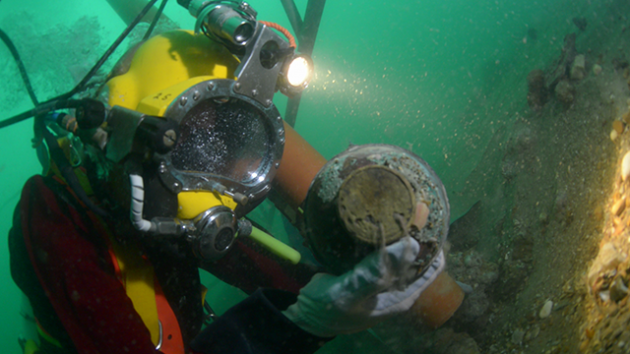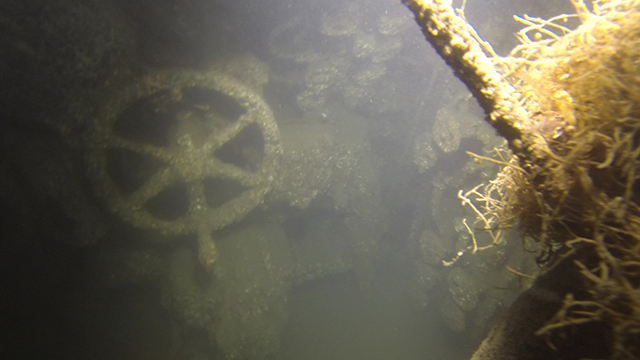The recently published Heritage at Risk Register reveals four of the 52 protected wreck sites around England's coast are under threat
Four wrecks along the south-east coast of England have been deemed so vulnerable that they have been included in this year’s Heritage at Risk register.
The wreck of the Dutch East India Company ship, the Rooswijk, and the 70-gun warship, Northumberland, which both foundered off Goodwin Sands in Kent, are on the list along with the warship London, which lies off Southend Pier in the Thames Estuary and HMS Invincible which is at Horse and Dean Sand off Hampshire.
It is the first time Northumberland has been included on the Heritage at Risk register. Built in 1678 as part of Samuel Pepys’ regeneration of the English navy, Northumberland sank off Goodwin Sands during the ‘Great Storm’ of 1703.
Historic England, which produces the annual report, said because of the changing nature of Goodwin Sands, the wreck of the Northumberland is becoming more exposed, which is putting it at risk. It is planning further survey work to determine the full extent of the wreck.
It said the large scale exposure of The London, HMS Invincible and the Rooswijk is the reason why they have been again included on the register. The Rooswijk is believed to be of particular risk as it is deemed a high risk heritage crime target through illegal diving.
Earlier this year, Dutch and British underwater archaeologists dived the Rooswijk to excavate the site.
Ornate carved knife handles, glass bottles and large wooden seaman’s chests were among the finds. Its large cargo of silver ingots and coinage have mostly been recovered during an excavation in 2005.
Continues below…
Two wrecks spanning almost 300 years of history granted protection
A shipwreck containing 15 cast iron English cannons off Chesil Beach, Dorset and a First World War U-boat off Whitby,…
Watch: Relic of WW2 naval disaster found off Scapa Flow
The pinnace of the Royal Navy battleship, HMS Royal Oak, had lain undiscovered in Scapa Flow in the Orkney Islands…
But it is not all bad news for the 52 protected wreck sites around England’s coast.
Three protected wrecks – the French frigate Hazardous off West Sussex, the wreck of the HMS Colossus off the Isles of Scilly, and a wreck off Dunwich Bank in Suffolk – have been removed from the Heritage at Risk register following successful efforts to preserve them.

The Hazardous protected wreck site. Credit: Rodrigo Ortiz
Hazardous was lost in 1706 when she ran aground in Bracklesham Bay, West Sussex. During a life of less than six years, this ship had served in the French Navy, sailed the Atlantic three times, been taken as a prize and finally saw service in the English Navy.
It has been removed from the register as the site has been excavated by a voluntary groups of divers, ensuring important archaeological material and knowledge are not lost to the sea. The project was funded by Historic England.
The Dunwich Bank wreck was originally placed on the register in 2015 after a bronze gun was stolen from the ship. The wreck site is now being better monitored and managed which is why it has now been removed.
Pioneering stabilisation work on the HMS Colossus off the Isles of Scilly has resulted in the wreck being no longer at immediate risk.

A diver on the HMS Colossus. Credit: Cornwall and Isles of Scilly Maritime Archaeology Society
Historic England, along with other enforcement agencies, have also run a campaign to raise awareness of the 18th-century warship, which sank on her return from the Battle of Cape St Vincent in 1797.
On board was part of a collection of Greek antiquities amassed by Sir William Hamilton, the Scottish diplomat and husband of the mistress of Lord Nelson, Emma Hamilton.






